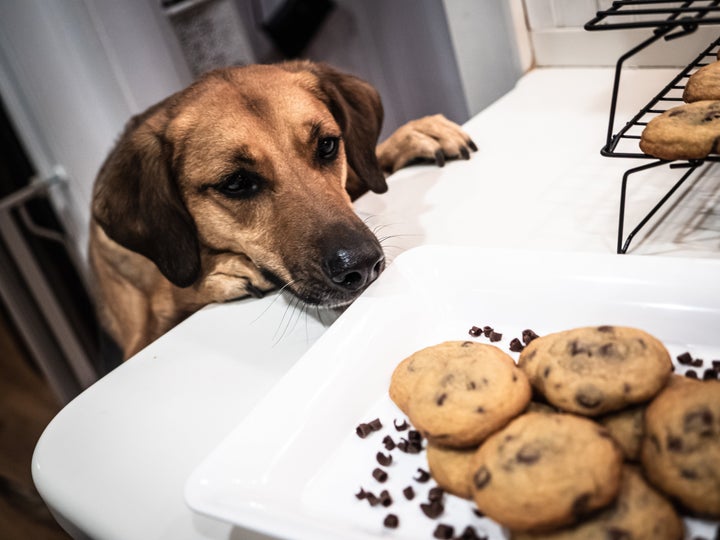
All dog-owners have fretted at some point that their beloved best friend might have gulped down something they shouldn’t have.
And chocolate is perhaps the one we worry about the most.
Yes, it’s delicious – but there’s a well-known belief that chocolate is poisonous to dogs.
So, is there any truth in it?
Yep – seems like this superstition actually is founded in fact.
The animal shelter Battersea Dogs & Cats Home listed chocolate as one of top nine poisonous foods for dogs, because it contains a stimulant called theobromine.
Battersea explained that this is toxic to dogs and can cause kidney failure.
The Blue Cross animal charity said the same thing – explained that the risk to each dog depends on three things: how much they’ve eaten: the type of chocolate they’ve ingested; and how much they weigh.
But they do recommend speaking to your vet so they can assess your pet’s risk of poisoning (which can occur even in small amounts) if you’re really worried.
Keep an eye out for symptoms of poisoning, which can include:
- Vomiting
- Diarrhoea
- Increased thirst
- Panting
- Hyperactivity
- Excessive urination
- Tremors, seizures or fits
- Heart issues
It can also result in death in some severe cases.
Once you think your dog has had some chocolate treats, try to figure out which type of chocolate they’ve eaten.
Dark chocolate is the most toxic form for your dog, despite being the best one for humans.
That’s because the darker the sweet treat, the higher the cocoa content and the more theobromine it contains – and therefore the more upsetting it will be for your pet’s internal systems.
Milk chocolate is less of a risk (due to its lower cocoa content) but still worth reaching out to your local pet surgery over the incident.
White chocolate is not really a risk, because of its very low theobromine content. That does not mean it should become your pet’s favourite new snack though – it still has a lot of fat and sugar, so could set off other health issues for your pooch.
It’s worth noting that cocoa powder on its own is even more toxic to your pet so you need to seek out your vet urgently if they consume this.
When it comes to chocolate with fillings, it is harder to decipher the impact it might have so it might be best to look up animal poison centres’ lists of particularly poisonous food to see if treatment is necessary.
Chocolate boxes could also have other harmful ingredients though, like nuts or raisins, which could cause another host of issues.
You can also check out the VetsNow’s toxicity calculator on the Blue Cross website to work out the estimated damage to your dog.
Meanwhile, the Care Animal Hospital in California, US, suggests: “While it’s not advisable, a dog can have 0.5 ounces [just under 15g] of chocolate for every pound of body weight without running the risk of fatal consequences.
“Ingestion of more than a pound of your dog’s body weight can result in chocolate poisoning.”
That suggests it will probably be OK if your dog accidentally licks up some chocolatey crumbs – but it’s best to keep the bar of dark chocolate out of reach, no matter how intense the puppy eyes get.